Text Sarah Ahmed
Leading Australian fortified winemaker Jen Pfeiffer of Pfeiffer Wines reckons she tasted her first Port wine before the age of 10. Referring to her lucky childhood she says, “I grew up thinking it was normal to have Vintage Port dinners every week!”. This year Pfeiffer realised her dream of making her very own Port wine at Quinta dos Murças. I caught up with her in the Douro to find out about her latest project and fascination for all things fortified.
When did you first come to the Douro?
I first visited the Douro with my parents when I was 10 years old. I can remember being amused by the balonges (white dome shaped fermentation vats) and the train journey to Pinhão. We had dinner there with David Baverstock at Dow’s Quinta do Bomfim, which is funny because David now heads up winemaking at Quinta dos Murças!
This is your second time making wine in the Douro. What draws you to the Douro and Portugal?
Because of my love of Vintage Port it was my winemaking holy grail to have the opportunity to work in the Douro in what I had only hoped could be a vintage year. I was lucky enough to do so [on her first visit in 2007 Pfeiffer worked for The Fladgate Partnership at Quinta da Roeda].
I left with a huge sense of connection to the region and there will always be a part of me that belongs here. I love the tradition and culture of winemaking here that has been going on for centuries, the kindness of the people, the salt of earth sense of community in the different villages and the intense human effort that has gone into producing the vineyards and the wine for hundreds of years. For me, the Douro is a magical place.
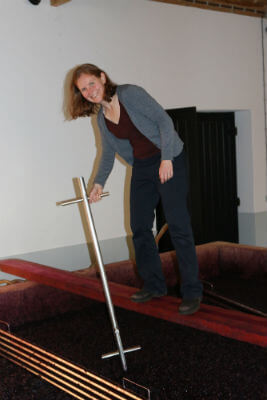
Jen Pfeiffer at Quinta dos Murças, Punching Down in the Lagares – Photo by Sarah Ahmed | All Rights Reserved
My second visit has not only confirmed the intensity of the relationship I have with this region but also presented a new opportunity that I could have only once dreamed of. I’m not only making my own Port but also working in a very different place which has been wonderful and very educational, especially because Quinta dos Murças makes great table wines as well as Port. I’ve learned a lot about the structure of Douro table wines – the length and finesse of the tannins and, depending on the blend, the elegance and perfume or density and richness of the fruit. I’d not realised red wines would receive so much work in the lagares – it’s not dissimilar to Port.
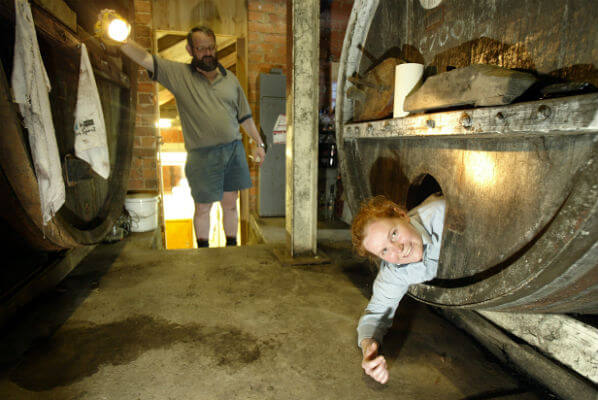
Chris & Jen Pfeiffer at Pfeiffer Wines’ barrel cellar, Rutherglen – Photo Provided by Pfeiffer Wines | All Rights Reserved
You make a wide range of fortified wines (Rutherglen’s famous fortified Muscats and Topaques and others made using the same techniques as Sherry and Port wines) also red, white, sweet and sparkling wines. Which do you most enjoy making?
Fortified styles, I’m a fortified girl! For me they are the most challenging wines. Blending across vintages, varieties and batches to keep a wine looking great for 50 years means you can be at your most creative and I love that. Coming from Rutherglen the quality, intensity and aromatics of Muscats and Topaques can be very exciting as is working with very delicate Apera [Sherry-style] wines under flor with next to no sulphur – it takes a different skill-set. At the end of the day they’re all my babies – I can’t single out a favourite fortified!
Which do you most enjoy drinking?
I love Riesling, Shiraz and of course the great fortified wines of the world. Here in the Douro of course I’m really enjoying drinking Port especially 20 year old Tawny Port after dinner because it has already developed such complexity.
You are a rare role model for a younger generation of fortified winemakers. How important is it to keep the torch burning for fortified wines?
It’s incredibly important to keep shouting out about fortified wines – I will never stop sharing my enthusiasm for these wines around the world and am involved in educational initiatives at Adelaide University and for the Wine & Spirit Education Trust. Within the Rutherglen wine industry young winemakers have formed a group called the Rutherglen Young Bloods whose objective is to take the region’s wine to the market and show its relevance.
One of the objectives is to show people the versatility of fortified wines (they’re not just an after dinner sipper). These wines make great aperitifs and can form the basis of some killer mixed drinks as well. Pfeiffer’s Seriously Pink Apera was inspired by my time at Quinta do Roeda where Croft Pink Port is produced; mixologists are using our Aperas in cocktails. It’s a great way to introduce young people to fortified wine.

Pfeiffer Seriously Pink – Photo Provided by Pfeiffer Wines | All Rights Reserved
There is also room to improve education about serving fortified wines with food, which would also improve their relevance. At Pfeiffer Wines’ cellar door we are always looking at ways to introduce wines to people, for instance High Tea with Topaques and Muscats. We also presented some savoury dishes which blew people away like Rutherglen Classic Muscat with gazpacho, terrines and patés with fruit chutneys.
And of course, the most important thing is to put the wines in front of as many people as possible, because generally when someone tastes a good quality fortified wine, they become hooked!!!!
I hugely enjoyed judging at Australia’s The Fortified Wine Show. The masterclasses are a clever way for senior judges to share their passion, knowledge and experience with other judges. I reckon Portugal should host an international fortified wine show. What do you think?
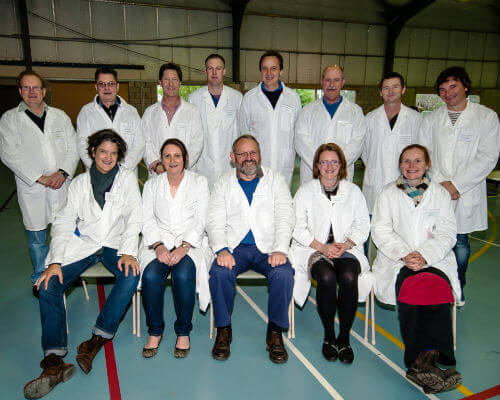
Rutherglen Wine Show, The Judges, September 2013 – Photo Provided by Rutherglen Wine Show | All Rights Reserved
I would love Portugal to have a fortified wine show. I’ll come and judge!!!! It would also be a fantastic opportunity to bring fortified wine people together for a cultural exchange and global perspective on the category. There would be great energy and passion in the room!
The Douro and Rutherglen are both famous for their fortified wines. You have worked in both regions. What similarities and differences do you see?
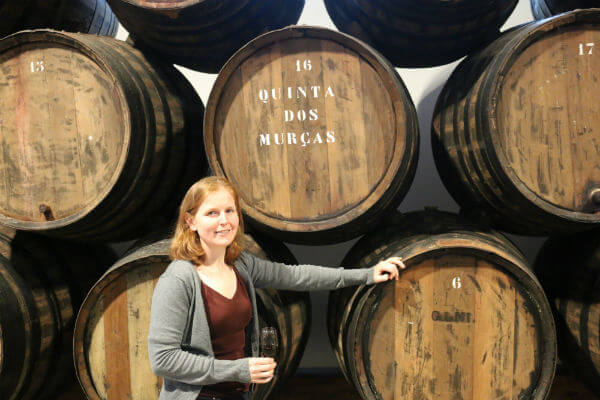
Jen Pfeiffer at Quinta dos Murças – Photo by Sarah Ahmed | All Rights Reserved
We share a strong-rooted tradition and culture of inter-generational winemaking which is so important with fortifieds because you need really mature stock for the top wines. Also working in a successful family business is about working with someone who has been there before so that you can talk about it – Rutherglen has great father and son partnerships between Mick and David Morris of Morris Wines and Bill and Stephen Chambers of Chambers Rosewood and, of course, my synergy with dad. We all know how important it is to understand the past of wines to understand their future. In the Douro working with first David Guimaraens, now David Baverstock, I’ve been like a sponge trying to absorb as much as can.
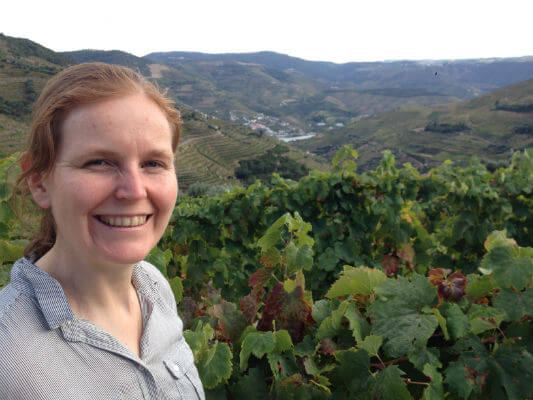
Jen Pfeiffer at Quinta dos Murças, in the vineyards – Photo Provided by Pfeiffer Wines | All Rights Reserved
Otherwise, the Douro and Rutherglen are clearly very different parts of the world with different terroir. Not just the soil profiles (the Douro’s schist versus Rutherglen’s red loam over clay and sandy alluvial river flats) but, for example, the Douro has elevation and different aspects because of its mountainous location while Rutherglen is flat, averaging just 165m above sea level. Cropping levels and vine age are hugely different too.
Although Rutherglen has some of Australia’s oldest plantings of Portuguese varieties they’re only around 20 years old so there’s a lot of catching up to do. Still, I see varietal similarities, for example Touriga Nacional’s mid-palate richness, fruit generosity and long, fine tannins and Tinta Barroca’s ripeness and fullness. On the other hand unlike the Douro, Tinta Roriz is not big on tannin in Australia – maybe it’s a different clone? And our Muscat [Moscatel] is red and picked much riper than the Douro’s white Moscatel Galego.
Since 2004, Pfeiffer has sometimes co-fermented different varieties from different vineyard blocks [rather than back blending single varietal wines] for complexity and completeness. However, on my first trip I can remember being really taken aback by the fact that this is a necessity in the Douro’s older [varietally mixed] field blend vineyards. While we have always picked based on the maturity of individual grape varieties, field blend vineyards are picked on the maturity of the block as a whole. Now I understand it is part of the Douro’s culture to look for the wine (not the individual grapes or varietal component parts) when assessing a wine.
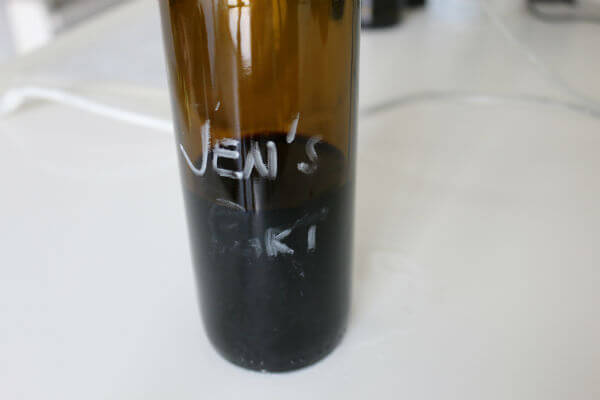
Jen’s Port at Quinta dos Murças – Photo by Sarah Ahmed | All Rights Reserved
How good is it to be back making wine in the Douro Valley after seven years. What does it mean to you to make wine and Port here for your own brand?
It is wonderful. As soon as I saw the first vineyard from the train I felt very much at home – part of me belongs to the Douro and I feel like I’ve been away too long. When I left in 2007 I said that my dream would be to one day own a quinta here in the Douro and produce my own wines to sell back into Australia. While I haven’t quite done that, to have the opportunity to work with a progressive company like Quinta dos Murças to make my own wines here and then sell them in Australia is like a dream come true. I’m incredibly excited that it’s actually happening. My wines are made from several parcels of Tinta Roriz, Touriga Nacional, Tinta Barroca, Tinta Amarela and a small amount of Touriga Franca which I’ve followed from harvest through ferment to barrel. I’ll be regularly tasting samples once I’m back in Australia to monitor my wines’ progress and, after I’ve completed the vintage in Rutherglen next spring I’ll come over and taste every barrel and put the blends together for bottling.
Tell us about the Naked Wines project and your market for the wines from this project.
My project came about because, Australia’s Naked Wines – the crowd-funding group for winemakers – invited its members (who are known as “angels”) to cast their vote for one of three Australian winemakers’ dream-come-true projects. If a winemaker got 2000 votes, the project got the go ahead. Within three days all three projects got 2000 votes! My Port and Douro wine from Murças will be sold online in Australia through Naked Wines. It’s too early to say if my wine will be of Vintage Port quality, a Late Bottled Vintage Port or Reserve Ruby.
Since both the other two projects are in Australia I’ve been really grateful for the can do attitude of David Baverstock and his team at Murças which has helped make my long-distance dream a reality and, of course, the angels who believed in me and wanted to support me. I’ve been sharing my journey here with the angels and I can’t wait to show them my Douro wine and Port.
Are Portuguese grape varieties, fortifieds and wine popular in Australia?
I think Portuguese grape varieties are becoming more and more popular in Australia. Around Rutherglen there have been plantings of Touriga Nacional, Tinta Roriz, Tinta Barocca, Sousão and Tinta Cão for over 20 years, both for Vintage (Port wine) styles and table wine. In other regions in Australia, these are varieties that are gaining in popularity too, especially Tinta Roriz (or Tempranillo as we are obliged to call it).
Likewise, Portuguese table wine is growing in popularity, particularly red wines from Douro, Dao and Alentejo. Port wine has been sold in Australia for a long time, with a particular focus on vintage and tawny. While the market is not huge for port wine in Australia when compared to the UK or the US, it is still very much considered a benchmark style of the world.
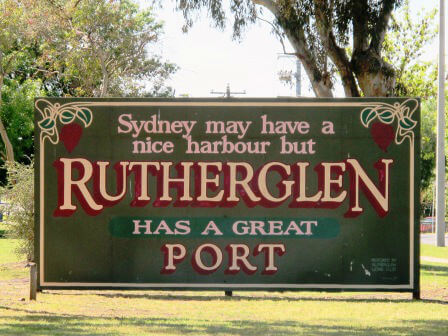
Rutherglen has its Port – Photo by Sarah Ahmed | All Rights Reserved
Is it a good thing or a bad thing, Australia can no longer use the term Port or Sherry?
For most of my life, wine terms have been changing. I remember as I child, Australian winemakers using the terms Champagne, Hermitage and Claret. These terms are no longer in use. It is just a part of evolution.
Ultimately I think it is a good thing – I respect the region and heritage of Port and Sherry wines. While Australian winemakers have tried to emulate these styles over the years, it has been done so as a complement to those wines….but naturally these wines are unique again. Just like it is important to protect the heritage of the Rutherglen region with our Muscats and Topaques, it is important to protect the heritage of the Port and Sherry industries.
While initially there was some backlash in the Australian media about the name changes, Pfeiffer Wines saw it as an opportunity to reinvigorate both categories. We have re-packaged and re-labelled our wines with a modern approach to our branding. Now we have generation X and Y wine consumers coming in to our cellar door asking for an Apera, when they would have never asked for a Sherry.
Contacts
167 Distillery Road
Wahgunyah, Victoria, 3687
Australia
Tel: (+61) 260 332 805
Fax: (+61) 260 333 158
Email: cellardoor@pfeifferwines.com.au
Site: www.pfeifferwinesrutherglen.com.au




Steve Talbot
More power to the fortified girl – we Aussie Angels have loved following Jen’s adventure and we can’t wait to taste her Douro wine and port. Salude e festeja como uma ruiva 🙂